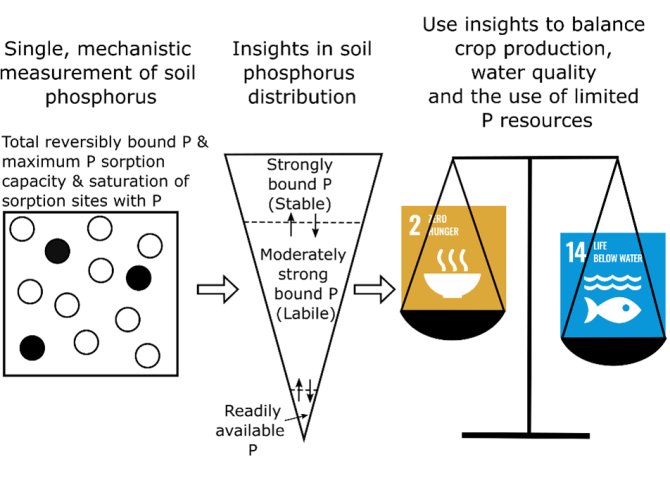
Project
Sustainable phosphorus inputs at the global and regional scale in view of crop yield and water quality
Phosphorus (P) is an essential nutrient for crops and is applied to agricultural soil to bring or keep the soil at a certain target soil P status in view of an optimal crop yield. Environmental objectives, however, are rarely considered in current P fertilizer recommendations. In this project, we re-assess P fertilizer recommendations and corresponding agronomic soil testing protocols in order to balance crop production, water quality and the use of finite P reserves in agriculture. For this revision, we identify soil properties which are pivotal to consider and provide insight in their spatial distribution using a digital soil mapping approach. We combine those maps with modelling and scenario analysis to illustrate how fertilizer recommendations can be made more sustainable.
Introduction
An historical excess of phosphorus (P) fertilization in industrialized countries has led to P-saturated soils and correspondingly to eutrophication of waterbodies due to enhanced P losses from soil to water through subsurface flow and runoff. For this reason, the planetary boundary for P has been crossed. In a collaboration between Wageningen University & Research, the Nutrient Management Institute, AgroCares and the Dutch Environmental Assessment Agency this research focuses on approaches to define and derive sustainable phosphorus inputs, balancing crop yield and environmental P losses at different spatial scales (Dutch, EU and global).
Objective
The overall objective is to assess sustainable phosphorus inputs at national, european and global scale in view of crop production, water quality and the use of finite P resources.
Methods
The methods to be used will be a combination of literature reviews, digital soil mapping, modelling and machine learning to:
• Propose a soil P test to use in routine agronomic soil testing protocols which fits with the current challenges to balance crop production, water quality and the use of finite P resources in agriculture.
• Produce high-resolution maps of the maximum P sorption capacity of soil (Dutch, EU and global scale).
• Improve the spatially heterogeneity of P sorption in current global soil P models (IMAGE-DPPS)
• Derive target P inputs at the Dutch, European and global scale to bring soils to target P levels for crop production, water quality and the use of finite P resources, including a discussion on how to define sustainable P targets.

(Expected) results
1. Illustrating why the P saturation degree, being the ratio of oxalate-extractable P and the maximum P sorption capacity, has high potential to be used as a universal agri-environmental soil P test. Current soil P tests used in routine agronomic soil testing focus solely on relations with crop yield, while impacts of agricultural management on water quality and how to best make use of historically build-up soil P becomes an increasingly important challenge. Using data from the soil database of the Nutrient Management Institute, we illustrate multiple agronomic and environmental advantages of the P saturation degree as an alternative soil P test, and argue why this soil P test is best to assess medium- term and long-term sustainable P inputs.
2. Digital Soil Maps of the maximum P sorption capacity, specifically of soil amorphous iron- and aluminium-(hydr)oxide contents.
3. Improvement of the spatial heterogeneity of P sorption processes in global P models (IMAGE-(G)DPPS). With a few exceptions on the regional scale, the P binding capacity of soils is not included in current models, while this soil property has a large effect on the fate of surplus P (P input minus P uptake) across different pools (directly available, reversibly bound and strongly bound P) and correspondingly on crop yield and P losses to the water system. We aim to create high-resolution maps of the maximum P sorption capacity of soils using machine learning techniques (Result 2) and incorporate those maps in current P models.
4. Provide pathways to balance crop production, water quality and the use of finite P resources in fertilizer recommendations by making use of improved models, digital soil maps of the maximum P sorption capacity and scenario analysis.
Publications
Van Doorn, M., van Rotterdam, D., Ros, G., Koopmans, G. F., Smolders, E., and de Vries, W. (2023). The phosphorus saturation degree as a universal agronomic and environmental soil P test. Critical Reviews in Environmental Science and Technology, 0(0):1–20. https://doi.org/10.1080/10643389.2023.2240211